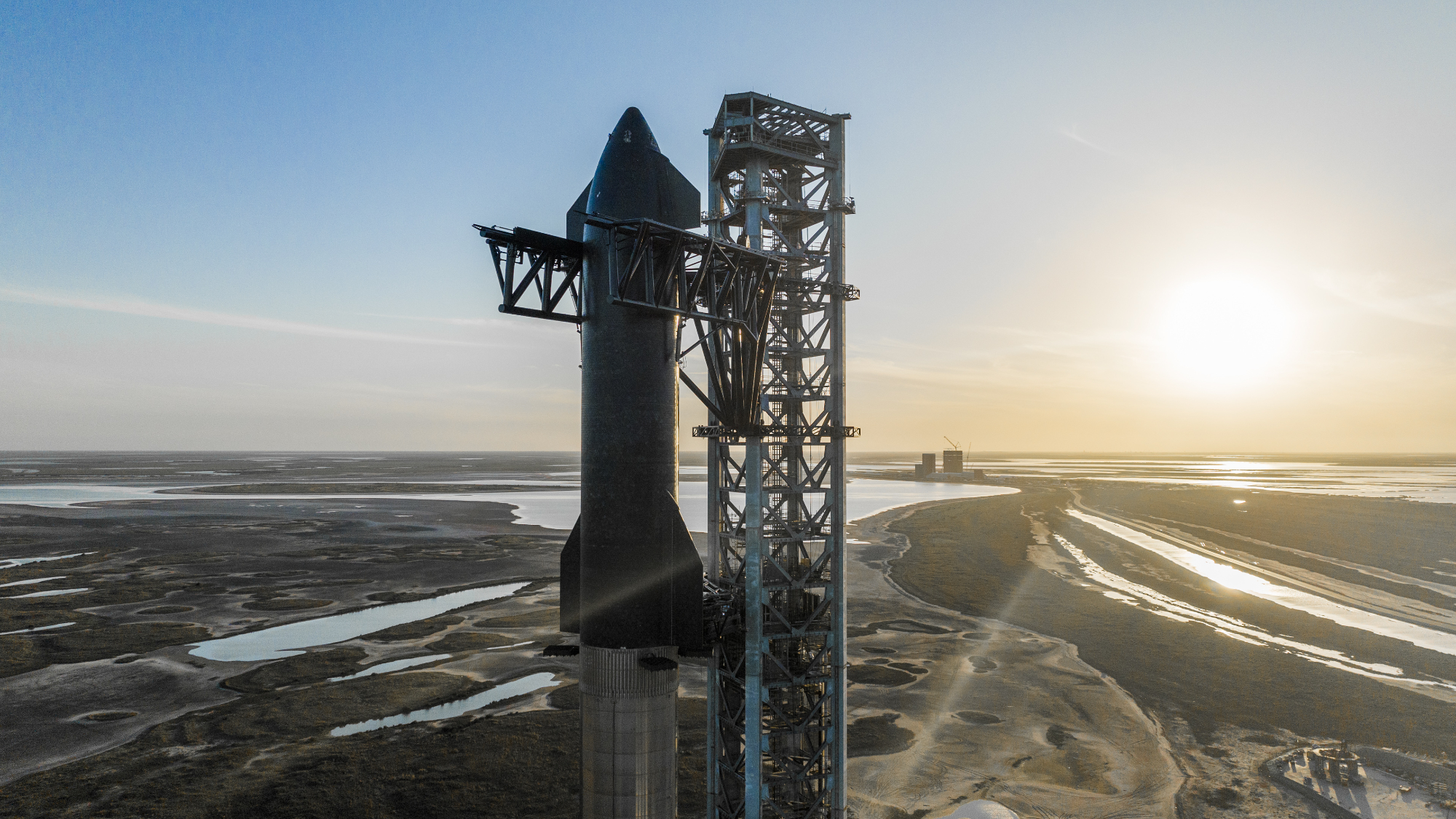
SpaceX can continue developing and testing its giant Starship vehicle in South Texas, provided the company takes pains to mitigate its impact on the environmentally sensitive area, a long-awaited review by the U.S. Federal Aviation Administration (FAA) has found.
That FAA review, called a programmatic environmental assessment (PEA), had been gauging the environmental impacts of Starship activities at Starbase, SpaceX's facility near the city of Brownsville.
The PEA was originally expected to be released by the end of 2021, but the FAA pushed the deadline back multiple times, citing the need to confer with other agencies and analyze the thousands of public comments submitted in response to a draft version that was published in mid-September.
Photos: SpaceX lifts huge Super Heavy rocket onto launch stand
One step closer to the first orbital flight test of Starship https://t.co/MEcQ6gST6Q pic.twitter.com/jxqEsM62gcJune 13, 2022
That work is finally done, the FAA announced today (June 13). And the result is mostly good news for SpaceX: The company can continue its Starship work at Starbase, which currently centers on prepping the huge vehicle for its first orbital test flight, without the need for an environmental impact statement, a stricter and more time-consuming review.
Indeed, SpaceX responded to the PEA release today with a celebratory tweet: "One step closer to the first orbital flight test of Starship."
But the final PEA doesn't give SpaceX free rein to do as it sees fit in and around Starbase, which sits along the Texas Gulf Coast in a biodiversity hotspot. The company must take more than 75 actions to reduce its environmental impact on the area.
Get the Space.com Newsletter
Breaking space news, the latest updates on rocket launches, skywatching events and more!
"After consultation with the U.S. Fish and Wildlife Service, there will be more advanced notice of launches to reduce how long State Highway 4 is closed during launch operations. The highway traverses Boca Chica Beach, Texas State Parks and the Lower Rio Grande National Wildlife Refuge," FAA officials wrote in an emailed statement today.
"Closures will not be allowed on 18 identified holidays, and weekend restrictions are limited to no more than five weekends per year, ensuring robust access to the refuge and park throughout the calendar year," they added. "The FAA will also require real-time notifications when access restrictions begin, end or are canceled."
SpaceX must take other measures as well, including allowing a biologist to monitor plant and animal populations in the area; keeping the local community informed about activities that could produce loud noises such as sonic booms; helping to ensure that launch debris is removed from sensitive habitats; and altering its lighting setup to reduce impact on the adjacent beach and nocturnal wildlife.
You can read the final PEA, as well as a number of other related documents, at the FAA's website.
Starship consists of a huge first-stage booster called Super Heavy and a 165-foot-tall (50 meters) upper-stage spacecraft known as Starship. Both of these elements will be fully and rapidly reusable, SpaceX founder and CEO Elon Musk has said.
SpaceX sees Starship as a potentially revolutionary transportation system, one that will make Mars colonization and a variety of other exploration feats economically feasible. NASA sees promise in the vehicle, picking it as the first crewed lunar lander for its Artemis moon program.
SpaceX has conducted a number of high-altitude test flights from Starbase with Starship upper-stage prototypes, but the upcoming first orbital attempt will be a giant leap for the program. It's unclear when exactly it will happen, and not all the regulatory boxes have been checked; SpaceX still must receive a launch license from the FAA.
Mike Wall is the author of "Out There" (Grand Central Publishing, 2018; illustrated by Karl Tate), a book about the search for alien life. Follow him on Twitter @michaeldwall. Follow us on Twitter @Spacedotcom or on Facebook.
Join our Space Forums to keep talking space on the latest missions, night sky and more! And if you have a news tip, correction or comment, let us know at: community@space.com.

Michael Wall is a Senior Space Writer with Space.com and joined the team in 2010. He primarily covers exoplanets, spaceflight and military space, but has been known to dabble in the space art beat. His book about the search for alien life, "Out There," was published on Nov. 13, 2018. Before becoming a science writer, Michael worked as a herpetologist and wildlife biologist. He has a Ph.D. in evolutionary biology from the University of Sydney, Australia, a bachelor's degree from the University of Arizona, and a graduate certificate in science writing from the University of California, Santa Cruz. To find out what his latest project is, you can follow Michael on Twitter.









